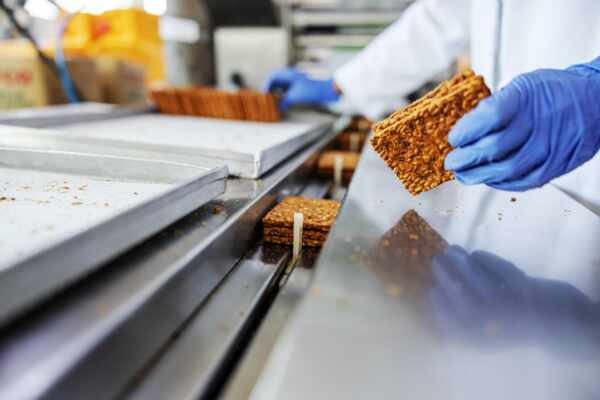Energy consumption has become an increasingly critical concern for food manufacturing facilities, affecting operational costs and environmental sustainability. Conveyor belt systems may consume a significant portion of the energy in food manufacturing operations, making it essential to optimise their efficiency. Implementing energy-efficient strategies for your conveyor belt system can result in substantial benefits, such as improved productivity, reduced operating costs, and a smaller carbon footprint.
In this in-depth guide, we will explore various energy-efficient strategies to optimise conveyor belt systems in food manufacturing facilities. We will discuss the importance of selecting energy-efficient motors and drives, regularly monitoring energy consumption, and employing smart conveyor belt system design. Furthermore, we will cover best practices for training and maintenance to support ongoing energy optimisation efforts in your food manufacturing facility.
Selecting Energy-Efficient Motors and Drives
One of the most critical factors in optimising the energy efficiency of conveyor belt systems is the choice of motors and drives. Consider the following when selecting energy-efficient options:
1. High-Efficiency Motors: Invest in energy-efficient motors that meet or exceed minimum efficiency requirements, such as the International Electrotechnical Commission’s (IEC) efficiency classes. High-efficiency motors can significantly reduce energy consumption and operational costs in the long term.
2. Variable Frequency Drives (VFDs): VFDs allow precise control of motor speed, enabling conveyor belts to operate at optimal efficiency for the specific requirements of each production run. By adjusting motor speed as needed, VFDs can reduce energy consumption, product waste, and wear and tear on components.
Regular Monitoring and Analysis of Energy Consumption
Continuous monitoring and analysis of your conveyor belt system’s energy consumption are crucial in identifying areas for improvement, implementing effective energy-saving strategies, and tracking progress:
1. Utilise Energy Monitoring Systems: Implement energy monitoring systems to gather real-time data on your conveyor belt system’s energy consumption, allowing you to identify inefficiencies and trends that may impact your overall energy usage.
2. Analyse Energy Data: Perform regular energy data analysis to pinpoint opportunities for improvement and evaluate the effectiveness of existing energy-saving measures. Continuously refining your energy-saving strategies will optimise your conveyor belt system’s energy efficiency over time.
Smart Conveyor Belt System Design
Incorporating energy efficiency into your conveyor belt system design can result in significant savings in energy consumption, cost reduction, and environmental impact:
1. Conveyor Layout Optimisation: Optimal conveyor belt system design minimises unnecessary curves, inclines, and declines, reducing energy consumption by optimising product transport routes. Consider straight paths and level horizontal sections where feasible.
2. Conveyor Speed Adjustments: Design your conveyor belt system with adjustable speeds to accommodate different production runs and requirements. This flexibility enables the system to consume energy based on the specific needs of each production stage and reduce wastage.
3. Passive and Active Energy Recovery Systems: Incorporate passive and active energy recovery systems, such as regenerative drives, to capture waste energy from deceleration or downhill movement and convert it back into usable energy. This method can significantly reduce the overall energy consumption of the conveyor belt system.
Best Practices for Training and Maintenance
Training your team on energy-efficient operation practices and implementing regular maintenance can ensure continued optimisation of your conveyor belt system’s energy consumption:
1. Energy Efficiency Training: Provide ongoing training for your staff, enforcing the importance of energy efficiency in daily operations. Empower employees to make energy-conscious decisions and operate conveyor belt systems most efficiently.
2. Regular Maintenance: Maintain a consistent maintenance schedule to ensure the optimal performance of energy-efficient equipment, such as high-efficiency motors and VFDs. Regular inspections, adjustments, and cleaning can help identify and resolve potential inefficiencies before they escalate, resulting in higher energy consumption and costs.
3. Proactive Energy Management: Encourage a proactive approach to energy management, enabling your staff to identify trends and potential energy-saving opportunities. Implementing a continuous improvement mindset can drive long-term energy-efficiency enhancements in your food manufacturing operation.
Conclusion
Optimising energy efficiency in conveyor belt systems for food manufacturing is critical for enhancing productivity, reducing costs, and contributing to a more sustainable world. By investing in energy-efficient motors and drives, regularly monitoring and analysing energy consumption, implementing smart conveyor belt system design, and enforcing best practices for training and maintenance, you can significantly reduce energy consumption while ensuring optimal performance for your conveyor belt system.
Take the first step towards a more energy-efficient food manufacturing operation with Change Parts Pty Ltd. Contact our team of experts today for personalised guidance, exceptional conveyor belts, and comprehensive support. Together, let’s strive for optimal energy efficiency, reduced costs, and a cleaner environment for future generations to come.




